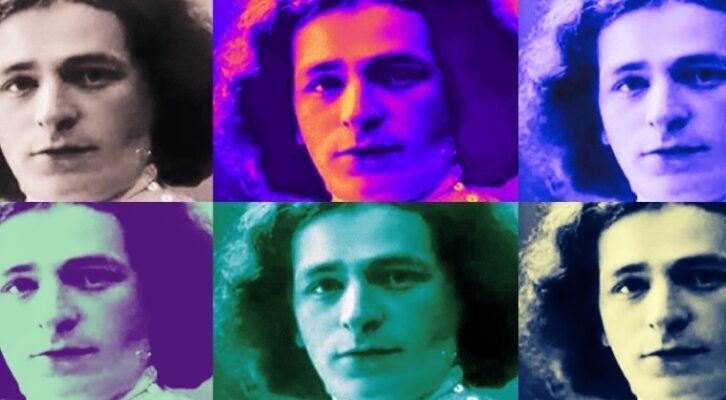
The Man Who Remembered Everything—and Thought It Was Normal
Charan Ranganath on the Famous Case of Solomon Shereshevsky
One of the most expansive memories ever documented belonged to a Russian newspaper reporter named Solomon Shereshevsky. For much of his life, he was oblivious of the peculiar nature of his memory. Then, in his late twenties, the young reporter’s habit of never taking notes during morning staff meetings caught the attention of the editor of his Moscow newspaper. Shereshevsky told the editor he never wrote anything down because he didn’t need to, then repeated verbatim the long list of instructions and addresses for that day’s assignment.
The editor was impressed, but even more interesting to him was that Shereshevsky seemed to think there was nothing unusual about this. Wasn’t this how everyone’s mind worked? The editor had never seen anything like it, so he sent Shereshevsky to have his memory tested.
Shereshevsky then crossed paths with a young researcher, Alexander Luria, at a psychology laboratory at the local university. For thirty years, Luria, who would go on to become one of the founding fathers of neuropsychology, tested, studied, and meticulously recorded Shereshevsky’s remarkable ability to quickly memorize made-up words, complex mathematical formulas, even poems and texts in languages he didn’t speak.
Even more astonishing than his ability to recall much of this information with the same accuracy many years later was that Shereshevsky could remember what Luria was wearing on the day he had administered a particular memory test. In his classic 1968 monograph, The Mind of a Mnemonist: A Little Book About a Vast Memory, Luria wrote, “I simply had to admit that the capacity of his memory had no distinct limits.”
Luria linked Shereshevsky’s remarkable capabilities to an extremely rare condition called synesthesia—meaning that every stimulus, regardless of which sense it came through, triggered every other sense. Shereshevsky could taste words, see music, and smell colors—even the sounds of words could impact his perception. He described asking an ice cream vendor what flavors she had. Something about her tone of voice made him see a stream of black cinders pouring from her mouth as she spoke, “Fruit ice cream”—which promptly ruined his appetite.
The connection between the worlds he created in his mind and the world he lived in was so visceral that Shereshevsky could elevate his heart rate by simply imagining he was running after a train.
The connection between the worlds he created in his mind and the world he lived in was so visceral that Shereshevsky could elevate his heart rate by simply imagining he was running after a train. He could raise the temperature of one hand and lower the other by picturing one hand on a stove and the other resting on a block of ice.
The distinctiveness of Shereshevsky’s sensory world extended to his imagination, giving him the ability to form distinctive memories that were resistant to interference. New Yorker writer Reed Johnson, who spent years researching Shereshevsky, described how he was able to attach any memoranda, no matter how bland, to stories he conjured in his imagination, which he could follow like a trail of bread crumbs to find his way back to that information later on:
The strength and durability of his memories seemed to be tied up in his ability to create elaborate multisensory mental representations and insert them in imagined story scenes or places; the more vivid this imagery and story, the more deeply rooted it would become in his memory.
In his later years, when Shereshevsky began performing his incredible memory feats for a paid audience, he amplified this ability with a technique familiar to modern memory athletes such as Scott Hagwood and Yänjaa Wintersoul. Though it appeared to have been self-discovered rather than learned, Shereshevsky used a memory device similar to the method of loci. When he wanted to remember a sequence of words or numbers, he would visualize them as characters within the familiar schema of, say, a street in Moscow and take a “mental walk” through the vast worlds of his interior landscapes.
Although he is often discussed as an example of someone with an extraordinary memory, the key to Solomon Shereshevsky’s mnemonic capabilities was his vibrant imagination. Much of Luria’s decades-long study reveals a fundamental truth about the connection between memory and imagination, one that lies at the center of how we all remember. The peculiar way in which we form memories can lead us to stray far from reality, yet gives us the fuel to imagine a world with endless possibilities.
*
WHAT CAN HAPPEN
The simplest way to see the machinery of episodic memory at work is to scan people’s brains while they describe an event from their lives. For instance, if you showed me the word photograph while I was lying in an MRI scanner and asked me to use that word to help me recount an event from my life, I might pull up the memory of my first live rock concert.
At fourteen, I was obsessed with the album Pyromania by British heavy metal band Def Leppard. If you examined my brain activity while I recalled seeing Steve Clark play the signature riff during the band’s performance of “Photograph,” you’d see activation in the hippocampus, as I pulled up the contextual information that mentally transported me back to 1985, and in the DMN, as I brought up knowledge about concerts that enabled me to elaborate on how the event had unfolded.
Now, let’s try something a little different. Suppose you were lying in an MRI scanner and I showed you words such as pasta or skydiving and asked you to use those words to imagine something that hasn’t happened, or even something that would be unlikely ever to happen.
You might conjure up a mental image of cooking spaghetti with Motown legend Marvin Gaye or jumping out of a plane with pioneering physicist Marie Curie. In 2007, three research labs published experiments along these lines, and here’s the twist: the brain activity changes that occur when people imagine these kinds of scenarios are remarkably similar to those that occur when people recall events that they actually experienced.
This odd parallel between imagination and memory came as a surprise to many in the scientific community, and it captured the attention of the media—Science magazine declared it one of the top ten breakthroughs of the year —but it did not come out of the blue. It was anticipated nearly a century earlier by English psychologist Sir Frederic Bartlett, whose work would become the foundation for the idea that we use mental frameworks (i.e., schemas) to organize and process the world around us.
Bartlett began his research on human memory as part of his dissertation at the University of Cambridge in 1913. After receiving his PhD, he focused not on memory but on cultural anthropology and then on applications of psychology for the military. Fortunately, Bartlett eventually circled back to the topic of memory and, in 1932, published his most important work, Remembering: A Study in Experimental and Social Psychology.
Bartlett’s book was a dramatic departure from the tradition of memory research established by Hermann Ebbinghaus back in 1885. Ebbinghaus quantified memories for strange, meaningless information under strictly controlled conditions. In contrast, Bartlett drew on his experiences in applied psychology and anthropology, observing and describing how we use memory in our everyday lives. Put more succinctly, Bartlett was interested in understanding how we remember, rather than simply quantifying how much.
In his most famous experiment, Bartlett introduced a group of volunteers at the University of Cambridge to a Native American folktale called “War of the Ghosts”—specifically chosen because the cultural context was entirely foreign to these British students. Bartlett’s subjects could recall the gist of the story, but they made some characteristic errors. It was not simply a case of failing to remember some details, but rather that they adapted the details to match up with their own cultural expectations and norms. Words such as canoe and paddle were replaced by boat and oar; seal hunting became fishing.
Poring over these results, Bartlett observed that, although people do recall some details from the past, their recollections are approximate at best. He concluded, “Remembering is not the re-excitation of innumerable fixed, lifeless and fragmentary traces. It is an imaginative reconstruction.”
We do not simply replay a past event, but use a small amount of context and retrieved information as a starting point to imagine how the past could have been. We put together a story on the fly, based on our personal and cultural experiences, and tack on those retrieved details to flesh out the story. Bartlett’s insight is key to understanding why the brain’s machinery for imagination and its machinery for memory aren’t completely independent—they are both based on pulling up knowledge about what can happen, though not necessarily what did happen.

This is an excerpt from Why We Remember: Unlocking Memory’s Power to Hold on to What Matters by Charan Ranganath, published by Doubleday on February 20, 2024. Copyright © 2024 by Charan Ranganath.
Charan Ranganath
Charan Ranganth is the author of Why We Remember: Unlocking Memory’s Power to Hold on to What Matters. Dr. Ranganath is a Professor of Psychology and Neuroscience and director of the Dynamic Memory Lab at the University of California at Davis. For over twenty-five years, Dr. Ranganath has studied the mechanisms in the brain that allow us to remember past events, using brain imaging techniques, computational modeling and studies of patients with memory disorders. He has been recognized with a Guggenheim Fellowship and a Vannevar Bush Faculty Fellowship. He lives in Davis, California.



















